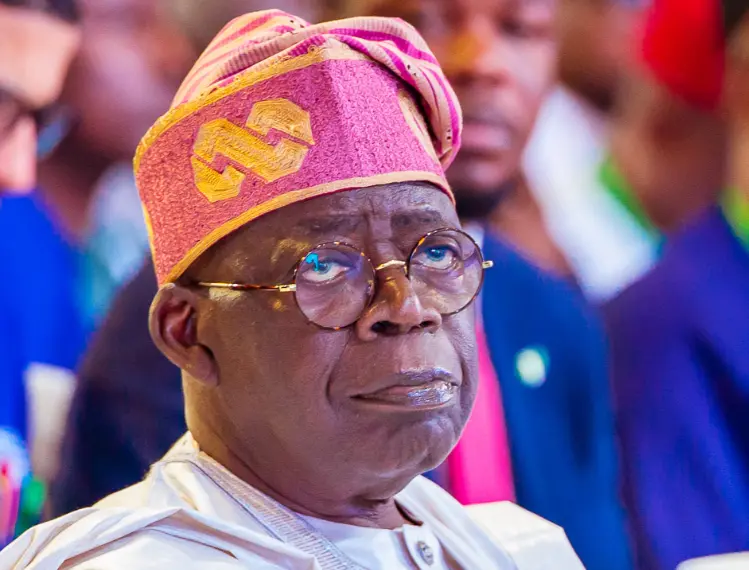
Analysts have predicted that the naira is expected to remain stable for a while following what they called robust Foreign exchange (FX) liquidity and an efficient FX market.
Specifically, analysts expect sustained inflows from foreign portfolio investors (FPIs) due to stronger market confidence. Additionally, improving non-oil exports, as well as limited incentives for naira speculation, are expected to reinforce steady inflows from domestic sources.
Daily Trust reports that the long-term stability of the naira anticipated was due to the rising inflows of foreign capital and surge in foreign reserves levels.
In the last one week, the naira appreciated by 1.1 per cent to N1,520.00/$, supported by the Central Bank of Nigeria (CBN’s) injection of $50.00 million, and increased inflows from Foreign Portfolio Investments (FPIs) following the Open Market Operation (OMO) auction.
President, Association of Bureaux De Change Operators of Nigeria (ABCON), Dr. Aminu Gwadabe, says with more foreign exchange inflows into the economy, the long-term stability of the naira is expected.
$5.6bn capital inflows
Data from the National Bureau of Statistics (NBS) showed that capital inflows into the economy already hit $5.6 billion in the first quarter of 2025.
The inflows represent significant gains from reforms instituted by the Central Bank of Nigeria (CBN) to make Nigeria attractive destination for local and foreign investors.
Out of the money, $3.1 billion accrued to the banking sector, representing 55.44 per cent of the total capital inflows.
Analysts from Cordros Securities who predicted long-term naira stability, further explained that gross FX reserves increased to the highest level since December 2021, growing by $353.47 million week-on-week to $41.08 billion on August 21, and further rose to $41.10 billion on August 22.
Just penultimate week, the reserves hit $41.10 billion driven largely by rising forex inflows and marginal increase in crude oil output.
According to the apex bank, the gross reserves moving average stood at $39.3 billion on August 1, and reached $39.5 billion on August 6, and hit $40.2 billion on August 8.
Aside from the reserves, the naira has also seen sustained stability while the inflation rate has continued to decline, closing July at 21.88 per cent.
Part of the reserves accretion was triggered by the FX reforms, instituted by the Olayemi Cardoso-led CBN, new policies instituted by the Federal Government to boost local production, reduce forex demand pressure, and lessen domestic prices have been instrumental to macroeconomic stability.
Gwadabe said the apex bank has been cultivating multiple FX sources to increase dollar inflows, boost dollar access to manufacturers and retail end users.
“From moves to improve diaspora remittances through new product development, the granting licenses to new International Money Transfer Operators (IMTOs), implementing a willing buyer-willing seller FX model, and enabling timely access to naira liquidity for IMTOs, the apex bank has simplified dollar-inflow channels for authorized dealers and other players in the value chain,” he said.
In 2023, Cardoso had liberalized the foreign exchange market, stopped central bank financing of the fiscal deficit, and reformed fuel subsidies. The government also strengthened revenue collection and took strategic steps to reduce surging inflation rate.
Since these reforms were implemented, international reserves have increased, and anyone can now access foreign exchange in the official market.
Nigeria successfully returned to international capital markets last December and was recently upgraded by rating agencies. A new domestic, private refinery is positioning Nigeria up the value chain in a fully deregulated market.
CBN’s policies, including the currency reforms, led to investment inflows from abroad, and reduced interventions in the domestic forex market.
The unification of exchange rates and the clearing of over $7 billion FX backlog raised the country’s investment outlook, with multilateral organizations, like the World Bank describing it as bold intervention to improve the economy’s sustainability in the long run.
Also, Nigeria’s sovereign risk spread has fallen to the lowest level since January 2020, erasing the premium accumulated during the pandemic and subsequent strain on its economy. All these are deliberate efforts to woo investors and sustain capital inflows to the economy.
In an emailed note to investors, Managing Director, Afrinvest West Africa Limited, Ike Chioke, explained that Portfolio Investment (92.2 per cent of total capital) dominated flows, rising by 30.1 per cent quarter-on-quarter and 150.8 per cent year-on-year to $5.2 billion.
The bulk of the FPI flows was to Money market instruments (up 162.2 per cent year-on-year to $4.2 billion), while Bonds (up 108.5 per cent) and Equities (up 137.7 per cent) attracted $877.4 million and $117.3 million respectively.
Opportunities in GDP numbers
Nigeria’s statistician-general, Adeyemi Adeniran, had explained how the economy fared in the rebased Gross Domestic Product (GDP) report. He said: “In nominal terms, the rebased GDP for 2019 stood at N205.09 trillion N213.63 trillion in 2020, N243.30 trillion in 2021, N274.23 trillion in 2022, N314.02 trillion in 2023, and N372.82 trillion in 2024”.
The NBS noted that in 2019, the rebased nominal GDP at basic prices represented an increase of 41.7 per cent over the nominal GDP of 2019 of the old base year (2010), 39 per cent in 2020, 38.7 per cent in 2021, 36.1 per cent in 2022, 34.6 per cent in 2023 and 35.4 per cent in 2024.
“The results show that the structure of the Nigerian economy has changed significantly with a rise in the share of agriculture and services sectors and a fall in the share of the industries sector in nominal terms, indicating a shift in the structure of the Nigerian economy than earlier reported,” the NBS said.
Adeniran further explained that the rebasing allows the country to better reflect the realities of the economy. “It’s not just about a bigger number but about accurate, timely data that supports smarter policy and economic planning,” he said.
How the banks stand
A well-recapitalised banking sector, experts say, is crucial for the growth of the domestic economy. Hence, Olayemi Cardoso, Central Bank of Nigeria (CBN) governor, advised banks to prepare for a new round of recapitalisation to ensure they have the necessary capital to support the Federal Government’s plan to achieve the $1 trillion Gross Domestic Product (GDP) target by 2030.
He said that President Bola Ahmed Tinubu’s economic plan aims to reach a $1tr GDP by 2030, emphasising that the current bank capitalisation is insufficient to support such a large economic scale.
Cardoso asked: “Will Nigerian banks have sufficient capital relative to the financial system’s needs in servicing a $1tr economy in the near future? In my opinion, the answer is “No!” unless we take action. That action was the ongoing recapitalisation of banks, meant to prepare them for expansion and attract big ticket transactions to support economic growth”.
Aliyu Ilias, developmental economist, noted that several sectors have previously remained uncaptured in official data, particularly entertainment. “By rebasing our GDP now, including those areas properly. This new visibility will make Nigeria appear much stronger to foreign investors, which will naturally help us attract more capital,” he said.
…LCCI seeks new market routes to boost forex earnings
Meanwhile, the Lagos Chamber of Commerce & Industry (LCCI) has said the rise in Nigeria’s non-oil exports is a good omen for the economy and called on the government to open up new trade routes to sustain the growth.
Its Director-General, Dr. Chinyere Almona, in a statement on Monday following President Bola Tinubu’s recent diplomatic missions to Brazil and Japan, said, “With Nigeria’s non-oil exports rising by 19.6% to $3.225 billion in the first half of 2025, driven by global demand for products such as cocoa and urea/fertilizer, cashew nuts, we need to remain focused on supporting these statistics by creating new market routes to new trade partners.
“An increase in non-oil exports to 4.04 million metric tons from 3.83 million tons in the first half of 2024 shows an increased capacity to process non-oil exports and boost our export earnings.”
DAILY TRUST.




